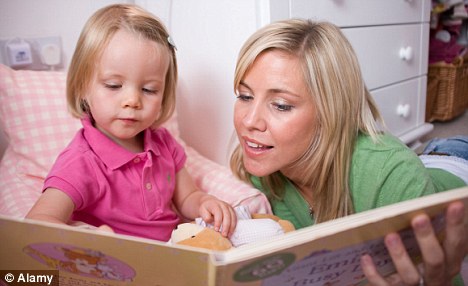Reading has declined drastically among American children with large section saying they read for pleasure just once or twice a year, a report released by Common Media Sense states.
A meta-analysis of seven surveys and various tests by public and private groups show that overall reading among pre-adolescents and youngsters has gone down tremendously in the last 30 years. The report also showed that fewer parents read to their children thesedays. Researchers, however, noted that other forms of reading, such as e-books, were not taken into account.
here’s the release
Common Sense Media today announced the release of “Children, Teens, and Reading,” a research brief that offers a unique, big-picture perspective on children’s reading habits in the United States and how they may have changed during the technological revolution of recent decades. The report brings together many disparate studies on children’s reading rates and achievement for the first time, summarizing key findings and highlighting where research is scarce, incomplete, or outdated, as well as offering suggestions for new areas of study.
Society has reached a major transition point in the history of reading. From children’s earliest ages, “reading” used to mean sitting down with a book and turning pages as a story unfolded. Today it may mean sitting down with a device that offers multimedia experiences and blurs the line between books and toys. At the same time, for older children, much daily communication is now handled in short bursts of written text, such as text messages, emails, Facebook posts, and tweets. All of this has led to a major disruption in how, what, when, and where children and teens read, and there is much we don’t yet know.
Though the report finds that reading is still a big part of many children’s lives — and reading scores among young children have improved steadily — achievement among older teens has stagnated, and many children don’t read well or often.
Among the key findings:
o Reading rates have dropped precipitously among adolescents.
The proportion of children who are daily readers drops markedly from childhood to the tween and teenage years. One study documents a drop from 48% of 6- to 8-year-olds down to 24% of 15- to 17-year-olds who are daily readers; another shows a drop from 53% of 9-year-olds to 19% of 17-year-olds. According to government studies, since 1984, the percent of 13-year-olds who are weekly readers went down from 70% to 53%, and the percent of 17-year-olds who are weekly readers went from 64% to 40%. The percent of 17-year-olds who never or hardly ever read tripled during this period, from 9% to 27%.
o A significant reading achievement gap persists between white, black, and Hispanic children.
Government test scores indicate that white students continue to score 21 or more points higher, on average, than black or Hispanic students. Only 18% of black and 20% of Hispanic fourth graders are rated as “proficient” in reading, compared with 46% of whites. The size of this “proficiency gap” has been largely unchanged over the past two decades.
o There is also a gender gap in reading time and achievement.
Girls read for pleasure for an average of 10 minutes more per day than boys, a gap that starts with young children and persists in the teenage years. It’s also reflected in achievement scores, with a gap of 12 percentage points in the proportion of girls vs. boys scoring “proficient” in reading in the eighth grade in 1992 and 11 points in 2012.
“Technology is playing an increasingly significant role in kids’ lives, and it’s changing the nature of how kids read and our definition of what is considered reading,” said Jim Steyer, CEO and founder of Common Sense Media. “Used wisely, technology such as ereaders could help support ongoing efforts to reduce disparities, promote reading achievement, and fuel a passion for reading among all young people, but we need more research to better understand the impact of technology on kids’ reading.”
“Children, Teens, and Reading” is part of a research effort directed by Vicky Rideout, a senior advisor to Common Sense Media, head of VJR Consulting, and director of more than 30 previous studies on children, media, and health.
“This review brings together many different government, academic, and nonprofit data sets to reveal some very clear trends,” said Rideout. “There has been a huge drop in reading among teenagers over the past 30 years, and we’ve made virtually no progress reducing the achievement gaps between girls and boys or between whites and children of color. The bottom line is there are far too many young people in this country who don’t read well enough or often enough.”
This research brief reviews national surveys and databases for trends in children’s and teens’ reading and reading achievement. Studies covered include the National Assessment of Educational Progress by the National Center for Education Statistics, The Kaiser Family Foundation’s Generation M2: Media in the Lives of 8- to 18-Year-Olds, Scholastic’s Kids and Family Reading Report (4th Edition), Northwestern University’s Parenting in the Age of Digital Technology, Common Sense Media’s Zero to Eight: Children’s Media Use in America 2013, and The Joan Ganz Cooney Center’s Learning at Home: Families’ Educational Media Use in America.
Canadajournal/Press Releases

 Canada Journal – News of the World Articles and videos to bring you the biggest Canadian news stories from across the country every day
Canada Journal – News of the World Articles and videos to bring you the biggest Canadian news stories from across the country every day

